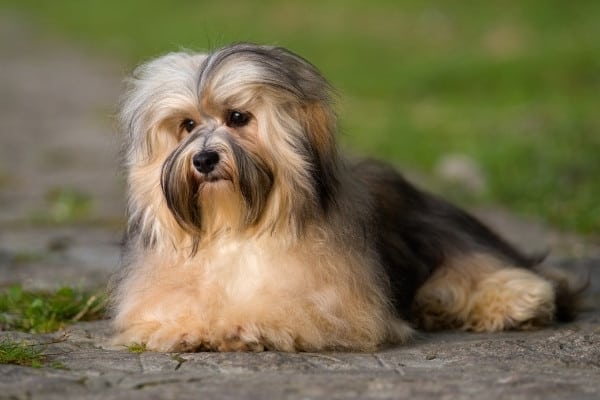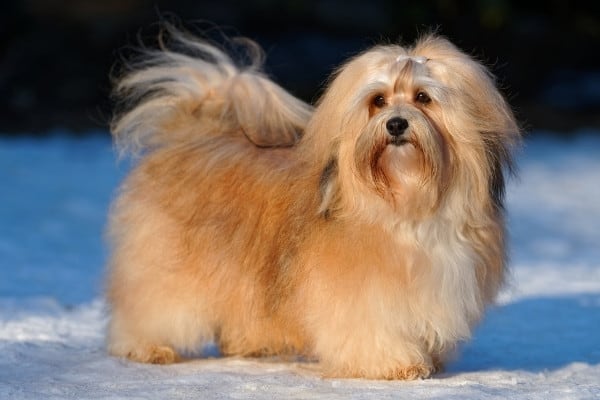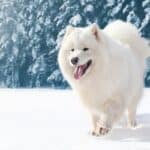
Havanese are the 24th most popular dog breed. These small dogs are great for people of all ages and families of all sizes. They bond quickly and adapt well to new conditions.
The history behind the development of this breed gives some insight into how they developed their good-natured personalities.
Where are Havanese dogs from? Havanese are originally from Cuba and were once called the Blanquito de la Habana or Havana Silk Dog. It’s commonly believed that Bichon-type dogs were brought to the island by Spanish colonists in the 1600s where they were refined, possibly with the addition of Poodles, into the dogs of today.
Havanese dogs can steal your heart quickly, and while there is a lot to love, it can also be nice to know where this breed originated.
If you are thinking about getting a Havanese and you want to know more about the breed and its origins, read on to find out more.
Havanese History
The history of the Havanese and the breed development is very interesting and can help owners understand more about their dogs.
It can help you learn more about your dog’s behavior and health and how well the breed gets along with other dogs and animals.
Havanese Origins
The Havanese is the only dog that comes from Cuba. It originated from a Bichon-type dog. This dog likely came to Cuba during the time of Spanish colonization in the area in the 17th century.
They were often a favorite pet of Spanish aristocrats, and the breed developed without a lot of interference.
Spanish royalty loved having these dogs at their side, and as the breed continued to grow in popularity, Havanese dogs became even more social and loving toward people.
Havanese Breed Development
While little is known for certain about the development of the breed, it is thought that, at one point, Poodles were likely added to refine the coat.
Regardless of the actual facts, the Havanese developed to be tolerant of the heat of Cuba.
Their coat developed to be light and soft so that it protects the dog’s skin from the harsh tropical rays, but surprisingly it isn’t too hot.
Owners in Cuba didn’t bother to trim the hair of the Havanese because it was so beneficial to them. Cuban’s also didn’t choose to tie up their facial fur.
The fur was left to fall over their eyes and face to help protect the eyes from the sun. These dogs were bred to be lap dogs and were not working dogs.
After gaining popularity in Cuba, the little Havana Silk Dog began spreading throughout Europe over the next few hundred years.
In 1959, during the Cuban Revolution, this small breed finally found itself in America, where individuals worked hard to preserve and grow the gene pool.
It wasn’t until 1996 that the Havanese breed received full recognition from the American Kennel Club, but the honor was well deserved, and the breed continues to increase in popularity both in the U.S. and abroad.
The Havanese Breed Today

Despite the long, rather unclear history, the breed has changed very little over the years, and today’s dogs very closely resemble those portrayed in artwork dating back to the 1700s.
Today the Havanese is a very popular breed, and they are still fantastic lap dogs. They are also occasionally entered into skill competitions and are very smart, easy to train, and make great pets.
Their hypoallergenic coats make them great for anyone with allergies, and their small size is ideal for anyone living in a small space or without a lot of outside space for a dog to run and exercise.
While they are playful and fun, they are also content sitting on a lap and just being a companion.
Havanese Personality
Havanese are very happy and social dogs. They bond with their owners quickly and do not like to be away from them or alone for long periods. They are very smart and enjoy learning.
If you can make training fun (yummy treats are always a big motivator), you can get them to learn really quickly.
They do not do well in crates, and they can easily become shy and reserved if they are not given the opportunity to socialize.
- Zuke’s Puppy Naturals With Added Vitamins And Minerals Training Treats, Salmon Recipe. Natural...
- Real salmon is the first ingredient in these tender puppy training treats. These fish treats bites...
Havanese Appearance
The Havanese is a small dog with long, thin, silky hair. They can be white, brown, black, blue, cream, fawn, gold, red, silver, or a combination of colors.
They also have a springy gait that makes them look like they are bouncing as they walk. They can weigh between 7 and 13 pounds and be anywhere from 8 to 12 inches tall.
Related Questions:
Are Havanese Dogs Yappy?
Havanese dogs are not known for barking excessively, but because they are small, their bark does sound a lot like a yap.
They can also easily be trained not to bark or to bark only on command or in certain situations.
Are Havanese Dogs Affectionate?
These small dogs love affection, and they are perfectly content sitting on their owner’s lap all day. They were bred for companionship, and they do this job well.
They can struggle with separation and shouldn’t be left alone for long periods. They are also affectionate towards other dogs and other animals that live with them.
Conclusion
Havanese dogs are very popular, and if you spend a few minutes with one, you will see why. These small dogs have big personalities, and knowing about their history makes them even more lovable.
If you are looking for a dog who will be content to sit at your side but also a lot of fun and easy to train, the Havanese may be the perfect pet for you.
Last update on 2024-04-19 at 20:03 / Affiliate links / Images from Amazon Product Advertising API





